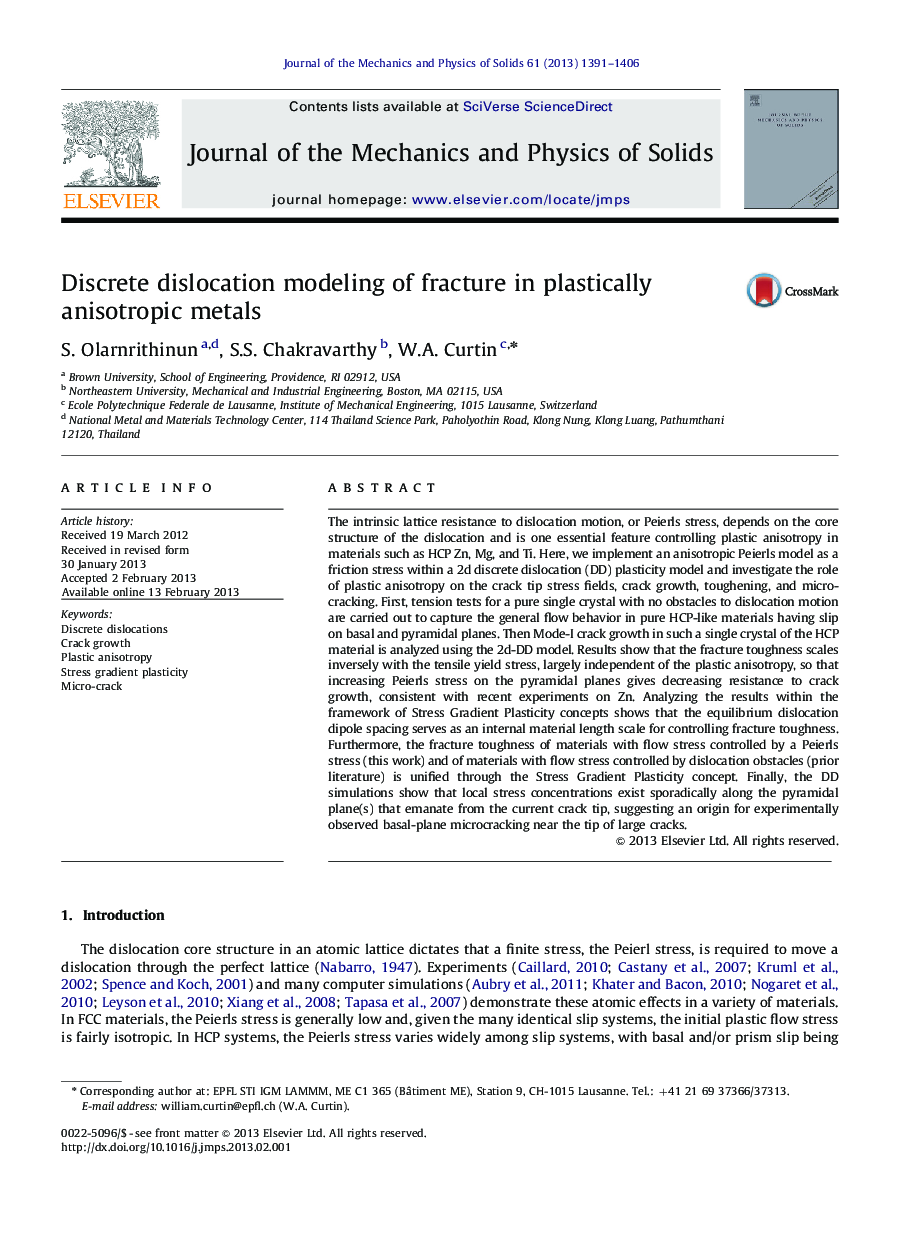| کد مقاله | کد نشریه | سال انتشار | مقاله انگلیسی | نسخه تمام متن |
|---|---|---|---|---|
| 797345 | 1467088 | 2013 | 16 صفحه PDF | دانلود رایگان |

The intrinsic lattice resistance to dislocation motion, or Peierls stress, depends on the core structure of the dislocation and is one essential feature controlling plastic anisotropy in materials such as HCP Zn, Mg, and Ti. Here, we implement an anisotropic Peierls model as a friction stress within a 2d discrete dislocation (DD) plasticity model and investigate the role of plastic anisotropy on the crack tip stress fields, crack growth, toughening, and microcracking. First, tension tests for a pure single crystal with no obstacles to dislocation motion are carried out to capture the general flow behavior in pure HCP-like materials having slip on basal and pyramidal planes. Then Mode-I crack growth in such a single crystal of the HCP material is analyzed using the 2d-DD model. Results show that the fracture toughness scales inversely with the tensile yield stress, largely independent of the plastic anisotropy, so that increasing Peierls stress on the pyramidal planes gives decreasing resistance to crack growth, consistent with recent experiments on Zn. Analyzing the results within the framework of Stress Gradient Plasticity concepts shows that the equilibrium dislocation dipole spacing serves as an internal material length scale for controlling fracture toughness. Furthermore, the fracture toughness of materials with flow stress controlled by a Peierls stress (this work) and of materials with flow stress controlled by dislocation obstacles (prior literature) is unified through the Stress Gradient Plasticity concept. Finally, the DD simulations show that local stress concentrations exist sporadically along the pyramidal plane(s) that emanate from the current crack tip, suggesting an origin for experimentally observed basal-plane microcracking near the tip of large cracks.
Journal: Journal of the Mechanics and Physics of Solids - Volume 61, Issue 6, June 2013, Pages 1391–1406